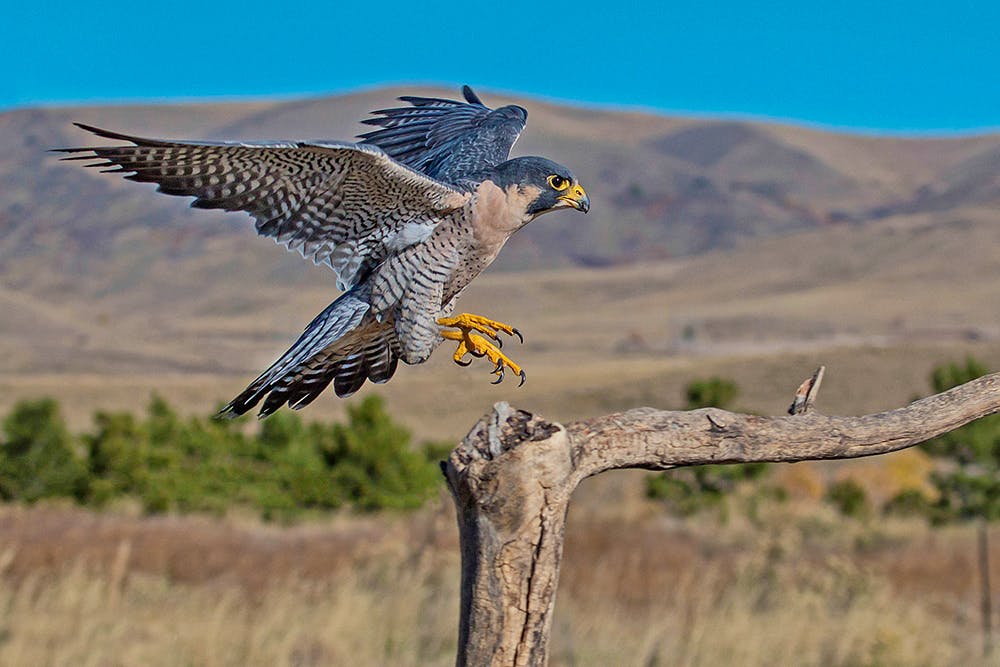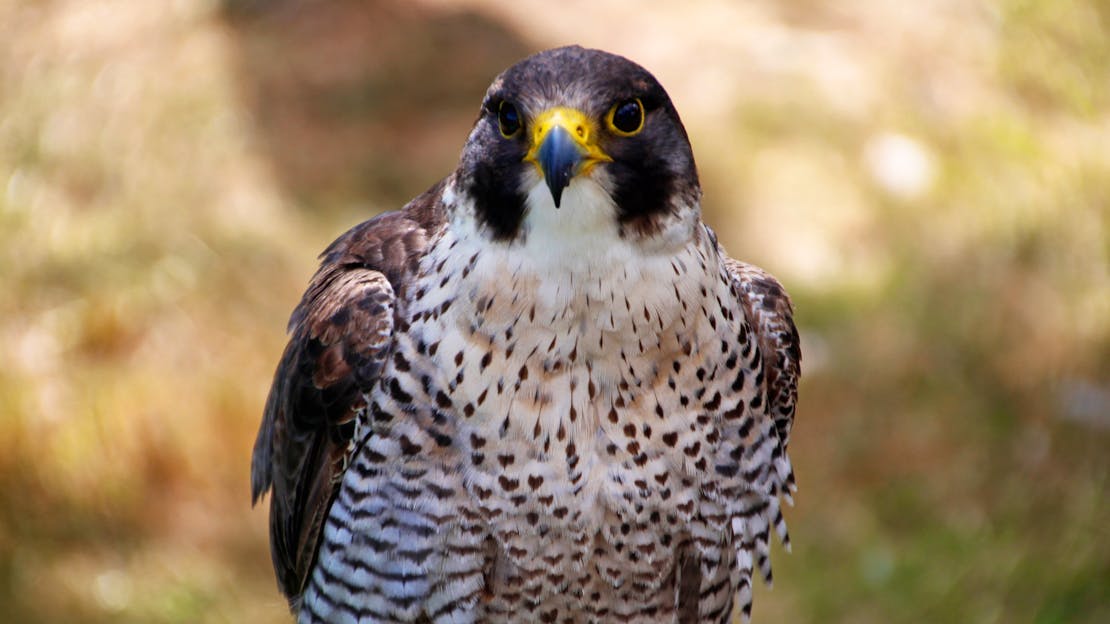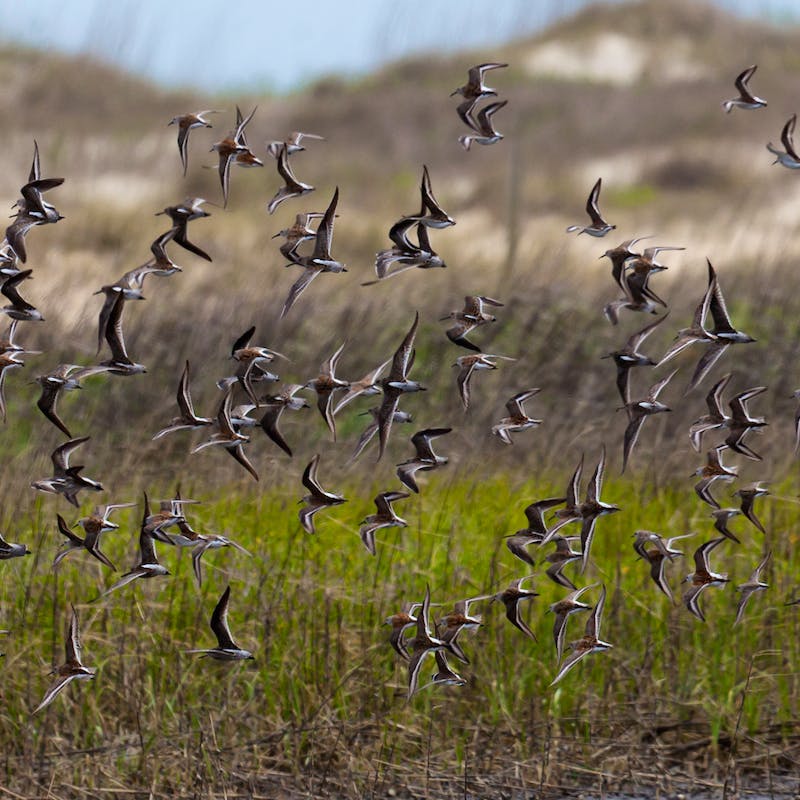Join our mobile Rapid Response Network!
You can be the first to hear about how we’re going to hold the next administration accountable and how you can fight back for wildlife!
The peregrine falcon is a raptor, or bird of prey.
Adults have blue-gray wings, dark brown backs, a buff colored underside with brown spots, and white faces with a black tear stripe on their cheeks. They have a hooked beaks and strong talons. Their name comes from the Latin word peregrinus, which means "to wander." Peregrines are the fastest animals on the planet – they are able to dive at 200 miles per hour.
Historically, the use of DDT (Dichloro-diphenyl-trichloroethane) as a pesticide resulted in a rapid decline in the population. DDT and DDE (a breakdown product of DDT) cause eggshell thinning, resulting in the eggshell breaking while being incubated.
Since the ban on DDT in the 1970's, peregrine falcon populations have recovered significantly, and are even showing signs of recovery in areas in which they haven't been spotted in some years. Once listed as endangered under the Endangered Species Act, the peregrine falcon was delisted in 1999.
Today, DDE is still found in some areas and DDT is used in some countries where the peregrine falcons winter, but the reduction of pesticide use has seen peregrine populations return. Human disturbance disrupts nesting in some areas.

Defenders' Impact
Now that the peregrine falcon is no longer on the Endangered Species list, we must ensure it is adequately protected against reckless development and other threats that can disturb falcons and affect their survival. We are currently involved in protecting the Migratory Bird Treaty Act (MBTA) from those in power who want to weaken it.
Secretary of the Interior David Bernhardt was instrumental in changing enforcement under the MBTA - allowing companies to forego practical best management practices to protect birds as they no longer face enforcement for failing to do so, and we are fighting this directive in court. We also promote “Smart from the Start” renewable energy siting, to keep wind farms out of migratory pathways and promote innovative technology that deters birds from turbines.
What You Can Do
Limit pesticide use. Obey posted signs and do not disturb nests. Use bird-friendly glass for windows or put stickers up to deter collisions with buildings, especially in urban areas.

About
This bird is one of the most widely distributed species in the world. It is found on every continent except Antarctica. It can survive in a wide variety of habitats including urban cities, the tropics, deserts and the tundra. Some migrate long distances from their wintering areas to their summer nesting areas.
There are an estimated 23,000 that spend most of their time in the United States.
Peregrine falcons have adapted to living in many cities and make use of tall buildings that provide suitable ledges for nesting and depend on the large populations of pigeons and starlings in cities for food. They dive and catch their prey in mid-air. Peregrines have few natural predators.
Both the male and female incubate the eggs for about one month. The chicks start to fly in about 42 days, but are still dependent on their parents to learn how to hunt. Peregrine falcons are very territorial during breeding season and will vigorously defend their nests.
Mating season: Late March through May.
Gestation: 29-32 days for egg incubation.
Clutch size: 3-4 eggs.
Peregrine falcons eat other birds such as songbirds and ducks, as well as bats. They catch their prey in mid-air.
Publications
Read More About the Peregrine Falcon
Peregrine Falcon Blog Posts









